Ongoing in Milan until April 16 is the 27th edition of Miart, the modern and contemporary art fair organized by Fiera Milano and directed for the third year by Nicola Ricciardi. The key word of this year’s edition is Crescendo, partly because, among other things, the number of galleries on offer has doubled since 2022. The question that the public less accustomed to fairs asks most frequently is: but how much do the works for sale in the booths cost? The price ranges are very diverse, ranging from works by emerging artists that can cost as little as a few hundred euros to works by established or historicized artists costing tens of thousands of euros. It must be said that at Miart not many galleries allowed us to publish prices, and even fewer are those that display the catalog with all the prices (the most virtuous example in this sense is Cardelli & Fontana, which decided to publish on Artsy all the works exhibited at the fair, with all the prices). Most galleries entrench themselves behind the ubiquitous “Price on Request” label. So let’s shed some light on a matter that tends to alienate those who approach art: here are ten of the most interesting works we found at this edition of Miart, all published with descriptions and prices that were communicated to us by the respective galleries, which consented to the publication, with the hope that the practice of displaying the prices of works will become more and more frequent.
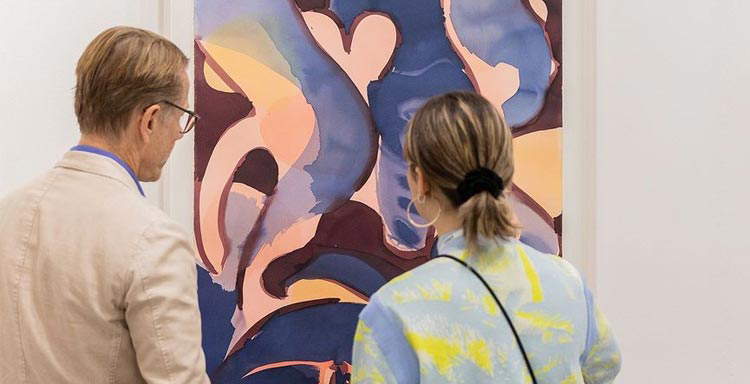
1. Dee Ferris, Sunset strip (2022), Presented by Corvi-Mora (London). Request: 15,000 euros.
In this tempera on canvas, British painter Dee Ferris tells of an old world ready to be swallowed up, of a sunset that seems to stop in the moment before it all goes dark, of a memory that relentlessly tries to escape. Over the painter’s latest series of works looms a sense of foreboding and abandonment suspended in the moment when one feels most fragile. Her canvases come across as simultaneously distressing and light and are, as Ferris says, “a huge boulder looming over me, both weightless and crushing.” The result is always that of a “disassembling process”: a tortuous but gradual search and subsequent reworking of sources (from Magritte to advertising), arriving at the creation of images suspended in time and space, unattainable. Corvi-Mora brings to the fair a number of works in this format, size slightly variable, range from 12 to 15 thousand euros.
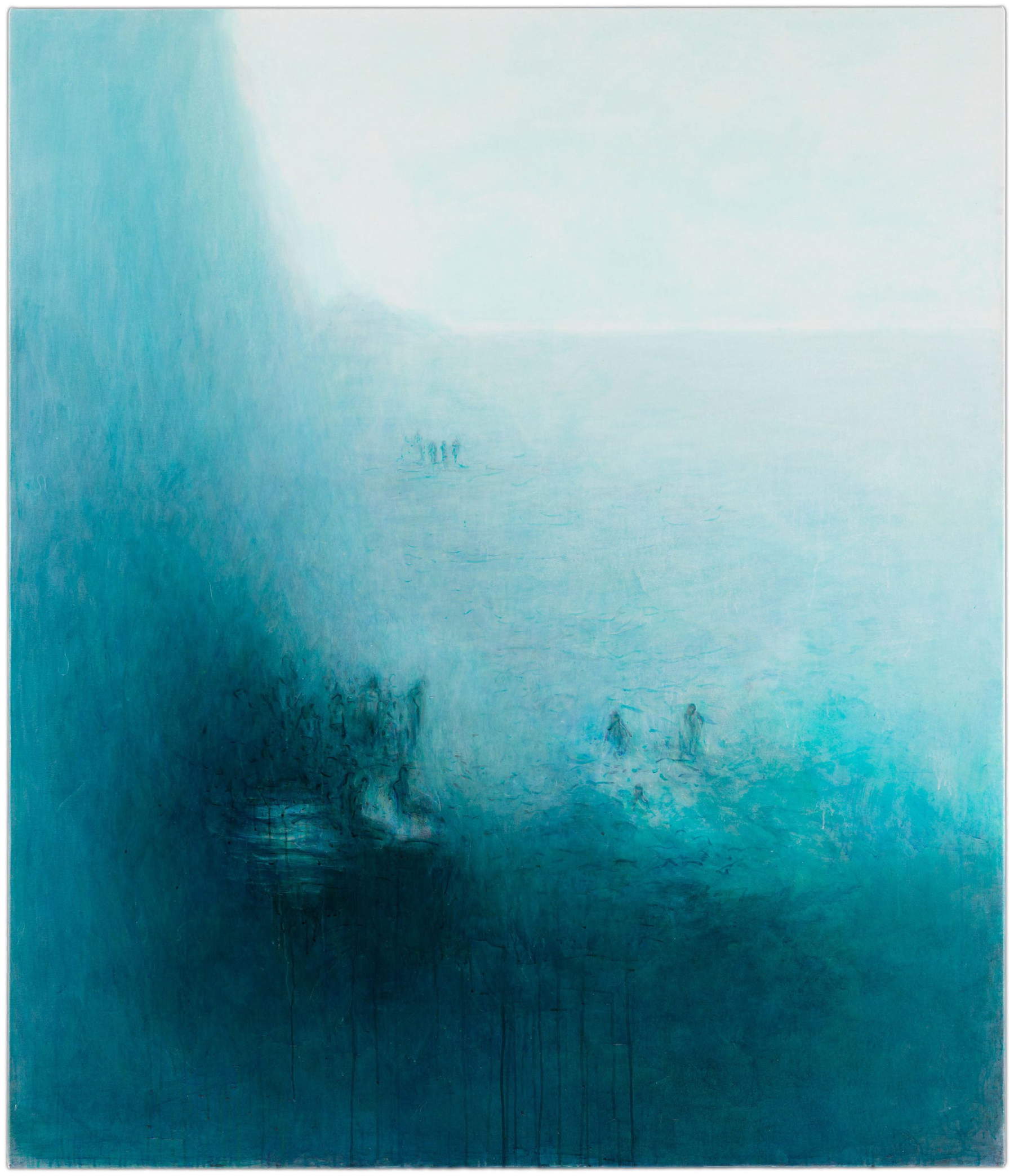
2. Vincenzo Agnetti, Portrait of an actor (1971), Presented by Galleria Farsetti (Milan). Request: 160,000 euros.
Among the main exponents of conceptual art is, without a doubt, Vincenzo Agnetti, who based his expressive research on language, transforming it into an art form that is ironic and very serious at the same time. Agnetti’s work presented by the Farsetti Gallery is part of the famous Feltri that the artist began to compose since 1968. In this case, the work is painted a dark gray and depicts the portrait of an actor through the use of literary redundancy. The Milanese artist, through sibylline and lapidary phrases, introduces the character’s intrinsic being and connotes him by suggesting his behavior.

3. Antonio Ligabue, Tiger with Fawns (1960-1961), Presented by Galleria de Bonis (Reggio Emilia). Request: 300,000 euros.
Ligabue’s was a life in exile characterized by a constant, engulfing restlessness. From an early age, the artist loved to play with animals, and throughout his life it would be easier for him to communicate with them than with humans, and for this very reason it would be a theme very dear to Ligabue. The country scenes, now very sweet and now very violent, trace the interiority of an artist engulfed by anguish and nostalgia. Nostalgia for his Switzerland, which he represents in the background of his works by drawing on his childhood memories. Although the landscapes refer back to existing geographical locations, Ligabue traveled only with imagination mixing the real with the dream, seeking a bliss now faded into distant memory. Tiger with Fawns from 1960-1961 is the manifesto work presented by the de Bonis Gallery, which has created a small but significant retrospective through the artist’s three phases. The canvas that opens the symbolic exhibition is part of Ligabue’s third phase and depicts the aggressiveness of the predator, with its dark side as a ferocious beast and the tearing fear of prey creating a most threatening place. Having lost all coordinates of his own existence, Ligabue, searches for death, aggressive momentum, but also fierce fear, pain, and deafening loneliness. The asking price is high (consider that Ligabue’s auction record, sealed in May 2022 for a Leopard with Snake, is 344,000 euros), but the subject is among the most recognizable of Ligabue’s production, and it is not common to find works of this type and size on the market.
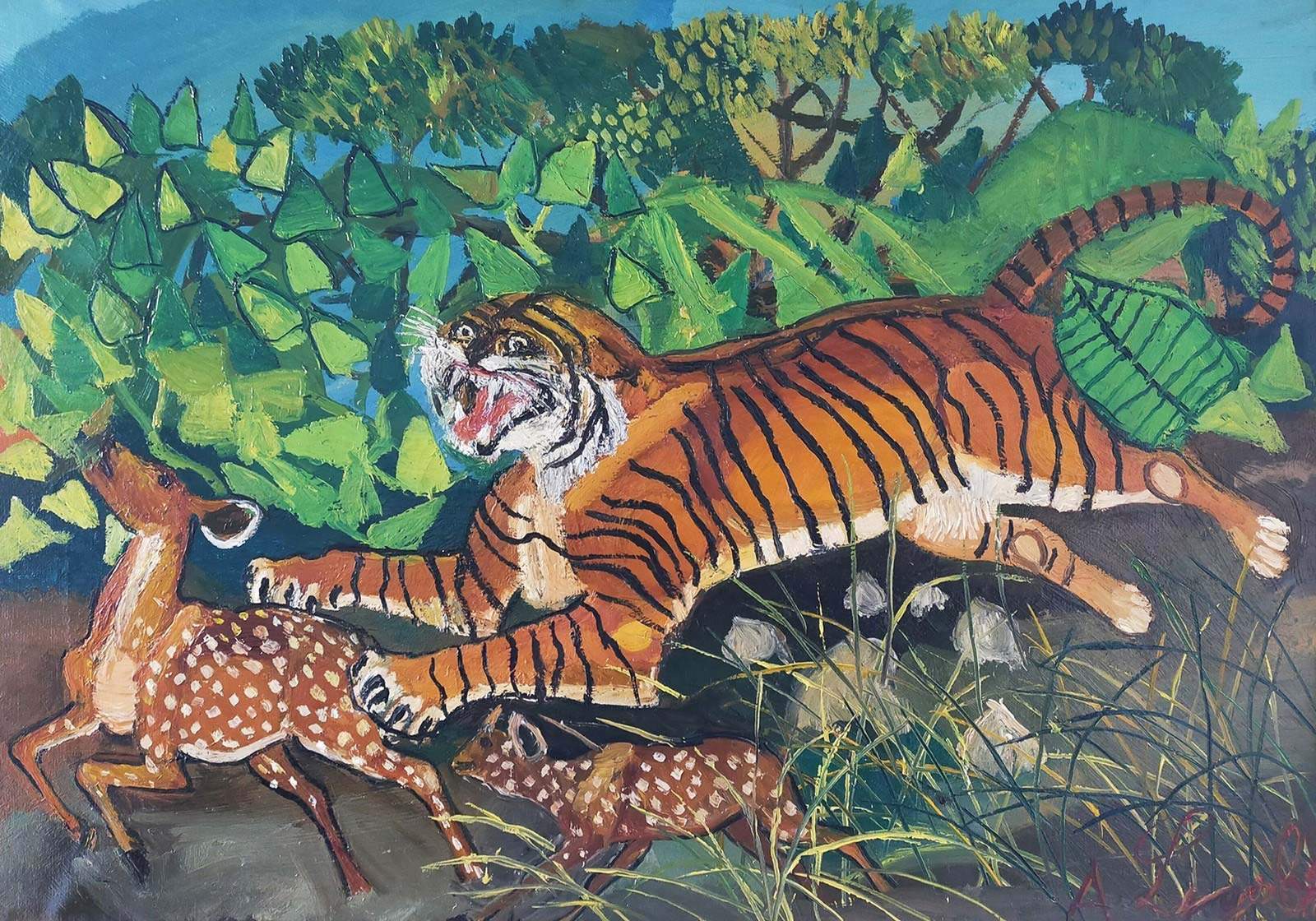
4. Rosa Barba, Composition in field (2022), Presented by Vistamare (Pescara). Request: €90,000.
Among the most interesting proposals for work done with moving images is certainly Rosa Barba’s Composition in Field: a kinetic sculpture that uses films interwoven with a metal frame.Letters on the film, illuminated from the back, constantly exchange showing excerpts from Charles Olson’s 1950 poetic manifesto “Project Verse,” which tells how poetry is a form of “energy transferred from where the poet received it. ”The artist, with this work, rejects the idea that man can have firm certainties and receive or give direct answers.
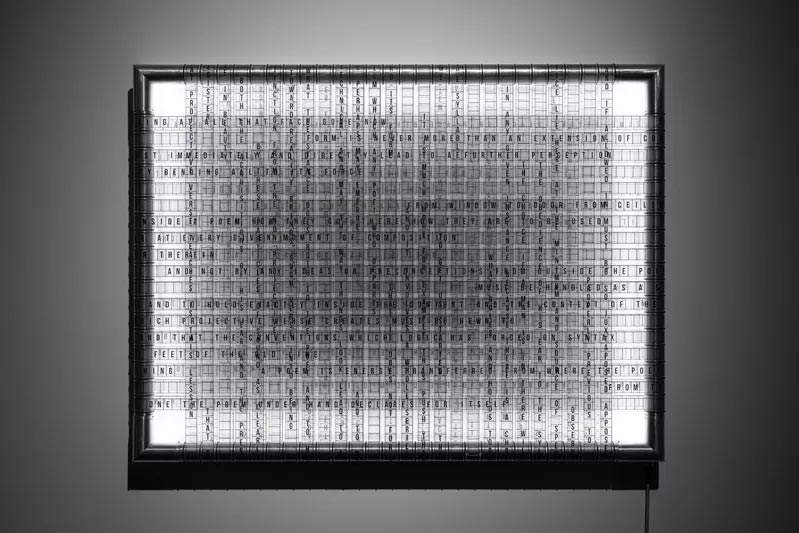
5. Mario Sironi, Study for the mosaic La giustizia tra la forza, la legge e la verità at the Palazzo di Giustizia in Milan (1936-1938), Presented by Galleria Russo (Rome). Request: 200,000 euros.
On the fiery red walls of Galleria Russo stands the large preparatory study for the mosaic on the second floor of the Miano Palace of Justice, La giustizia tra la forza, la legge e la verità by Mario Sironi. Before officially presenting the work in 1938, the artist made numerous preparatory studies starting in 1936. In this study, Sironi personifies Justice as a white-robed woman who shares the central space with the figure of the Law seated on a throne. Next to the Law are two interpenetrating, sketched figures and to the far left of the work two other statuesque figures, one naked and the other clothed. It is interesting to discover the changing shape of the developing ideas received from the preparatory studies so that they can be compared to the final product. In the Milan mosaic, Justice, always dressed in white, occupies the center of the scene, while on the right Sironi depicts the Law, now standing with legislative tablets in his hands and the embodiment of Truth. On the left, however, a mighty, muscular man as the personification of Strength flanked by Roman and Fascist symbols such as the fascio littorio now partially removed.
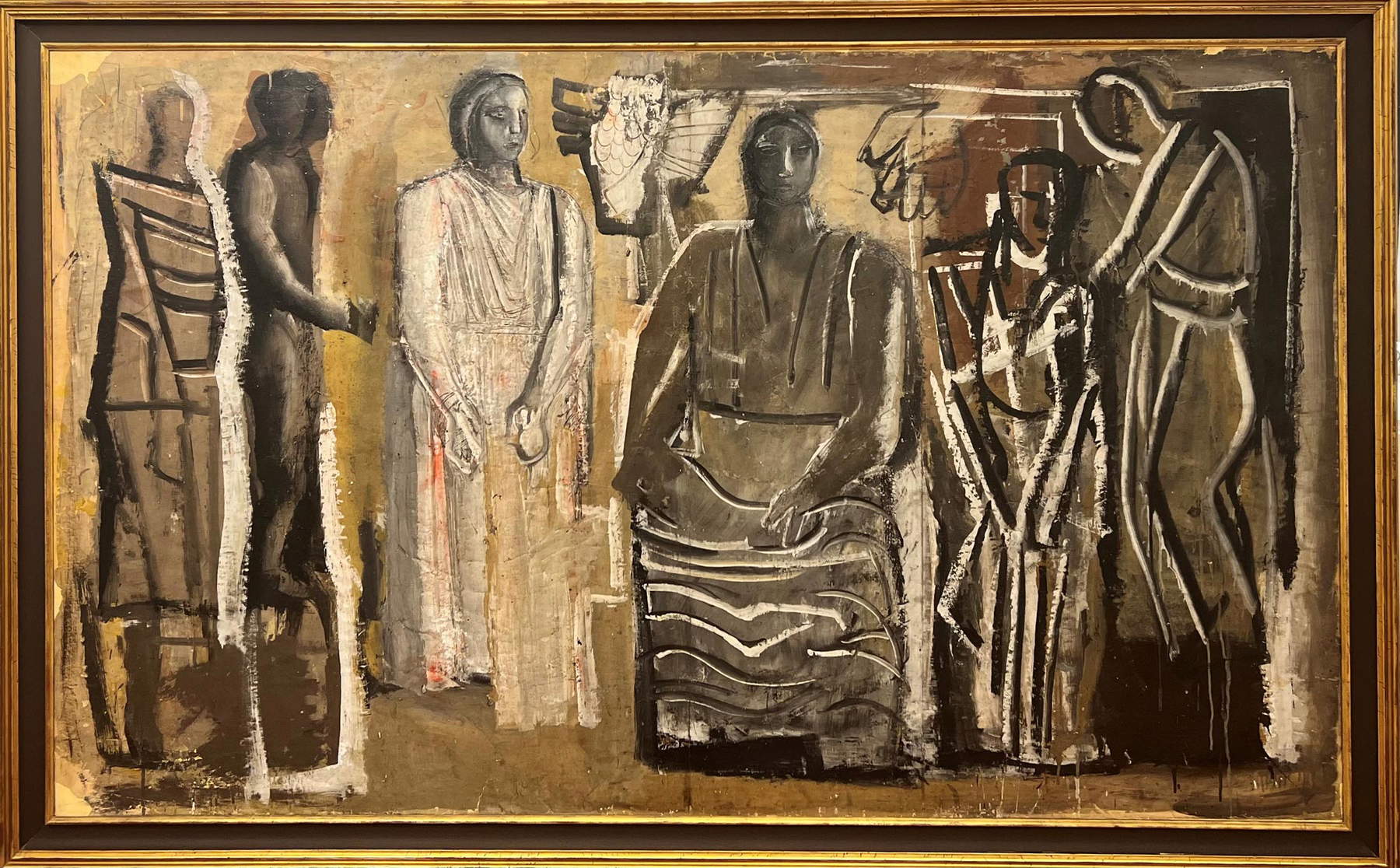
6. Arcangelo Sassolino, Untitled (2023), Presented by Galleria Continua (San Gimignano). Request: 30,000 euros.
Matter deforms with refined elegance under the hand of the Vicenza artist, who opens up new configurations and stimuli through sculpture and through the constant interpenetration between art and physics. Sassolino uses forces, thus creating as in this case concrete tears that reveal an extremely smooth part revealing, on the back, the outcome of the tear. Often described as ephemeral and fleeting, time is for him a tool through which to create and deform, and Arcangelo Sassolino himself states how “time is compressed in sculpture.”
 Arcangelo
Arcangelo7. Kathleen Goncharov, Purple Haze (2023), Presented by Olympia (New York). Request: 3,850 euros.
Kathleen Goncharov, an American by trade curator (she also curated the U.S. pavilion at the 2003 Venice Biennale), devoted herself assiduously (but privately) to painting following a trip to Italy in the 1980s, where she became enchanted by the late Gothic and Renaissance periods with its rich, warm palette. Her phytomorphic works evoke the sensuality and lightness of silk, the undulating forms of the Tuscan landscape, and above all an unconditional love of art. His subjects are the atmospheres and sweet sensations echoed by egg tempera or, as in this case, colored pencil. Touch, gesture is an integral part of Goncharov’s work, which through slow layering creates vivid colors while preserving an interwoven, palpable mark. The artist’s debut came at the Olympia Gallery just last year; thus, this is the first time her works have come to Italy.
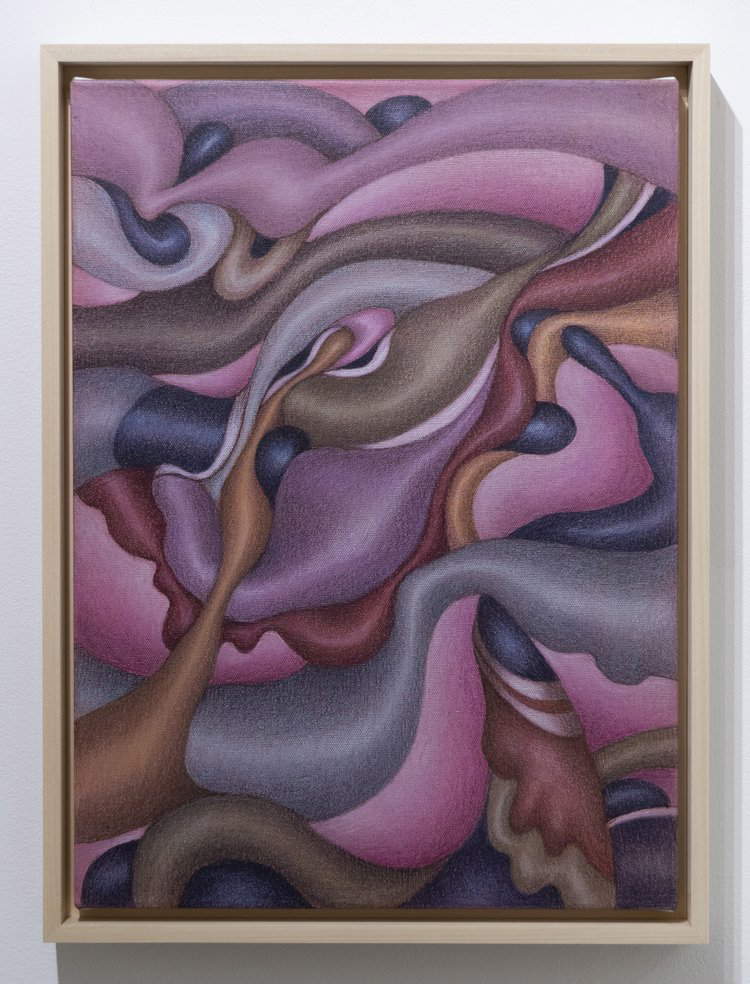
8. Beatrice Meoni, Ready to change (2023), Presented by Cardelli & Fontana (Sarzana). Request: 6,600 euros.
An artist to be discovered with grace and admiration is Beatrice Meoni, who approached painting on tiptoe, observing the world. A world she first explored by starting out as a scene painter and working very closely with the theater. The artist’s bodies find themselves in a constant search for a precise location in space, creating, thus, a continuous intersection between solids and voids, between absences and evolutions and taking on ever-changing appearances. A true tale, a staging of a changing body with its fragilities and unresolvable restlessness, now in free fall, now in agglomerations of arms and legs. A longtime leading name in Sarzana’s galelria, he is present at the fair with works of various sizes. For the smaller ones, the figure is 2,400 euros; for the larger ones, it is just over 8,000 euros.

9. Valerio Adami, The Cloud (1991), Presented by Dep Art Gallery (Milan). Request: 125,000 euros.
Valerio Adami approached art as a child when he was drawing the ruins and rubble of Milan during World War II. He began studying at a very young age with Felice Carena and then fell in love with the art of Oskar Kokoschka and the American pop art of Roy Lichtenstein. The cloud of 1991 fully represents his studies and constant research that veers toward comics and more pop art, but always remains firmly anchored in the more courtly study by inserting Latin phrases and looking to the solitary metaphysics of Giorgio de Chirico. Silhouetted against this acid green background is a mysterious figure of a woman, who seems caught in the infinite moment of unveiling herself.In the very foreground, however, is a stripped man reminiscent of Egon Schiele’s nervous bodies.
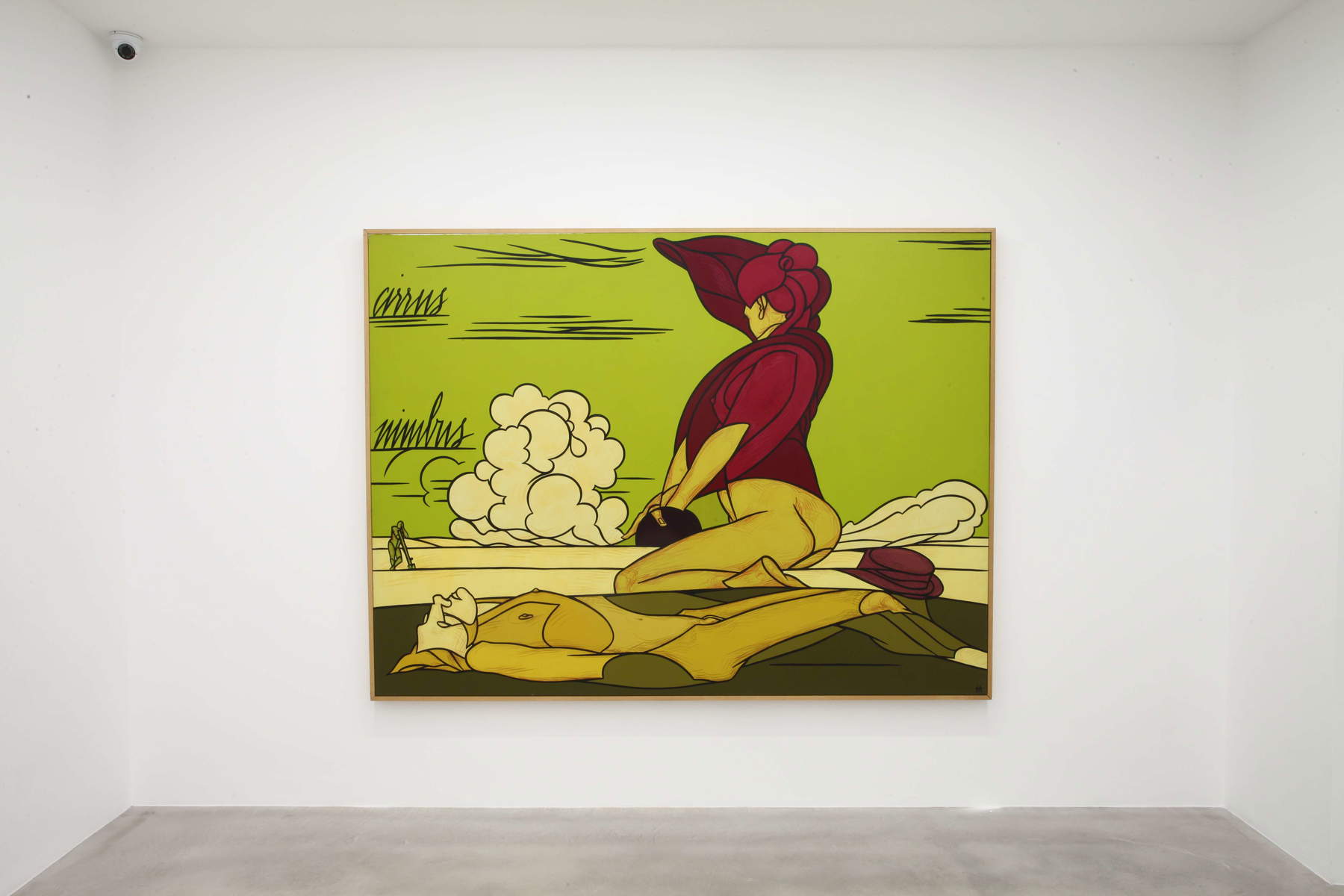
10. Anders Davidsen, September, (2023) from M+B (Los Angeles). Request: 2,500-8,400 euros.
An interesting proposition is the young Danish artist Anders Davidsen, class of 1987, who immerses his art in dreamy seascapes in which the sun falls low over the sea. Memories with faded boundaries between interiority and objective data allow the artist to give the viewer a world of absences, in which the landscape seems to merge seamlessly with emotional and mental states. Her brush vibrates under the warm light of the eternally setting sun, while luminous ochre patterns peep through flickering brushstrokes. The artist prepares his linen canvases with layers of rabbit skin, glue, gesso and pigments precisely to achieve these ephemeral, intangible textures. Davidsen’s paintings are delicate and do not impose themselves on the viewer, but choose to make space for themselves with extreme gentleness. Attractive asking: they range from 2,500 euros for smaller paintings to 8,400 for large-format ones.
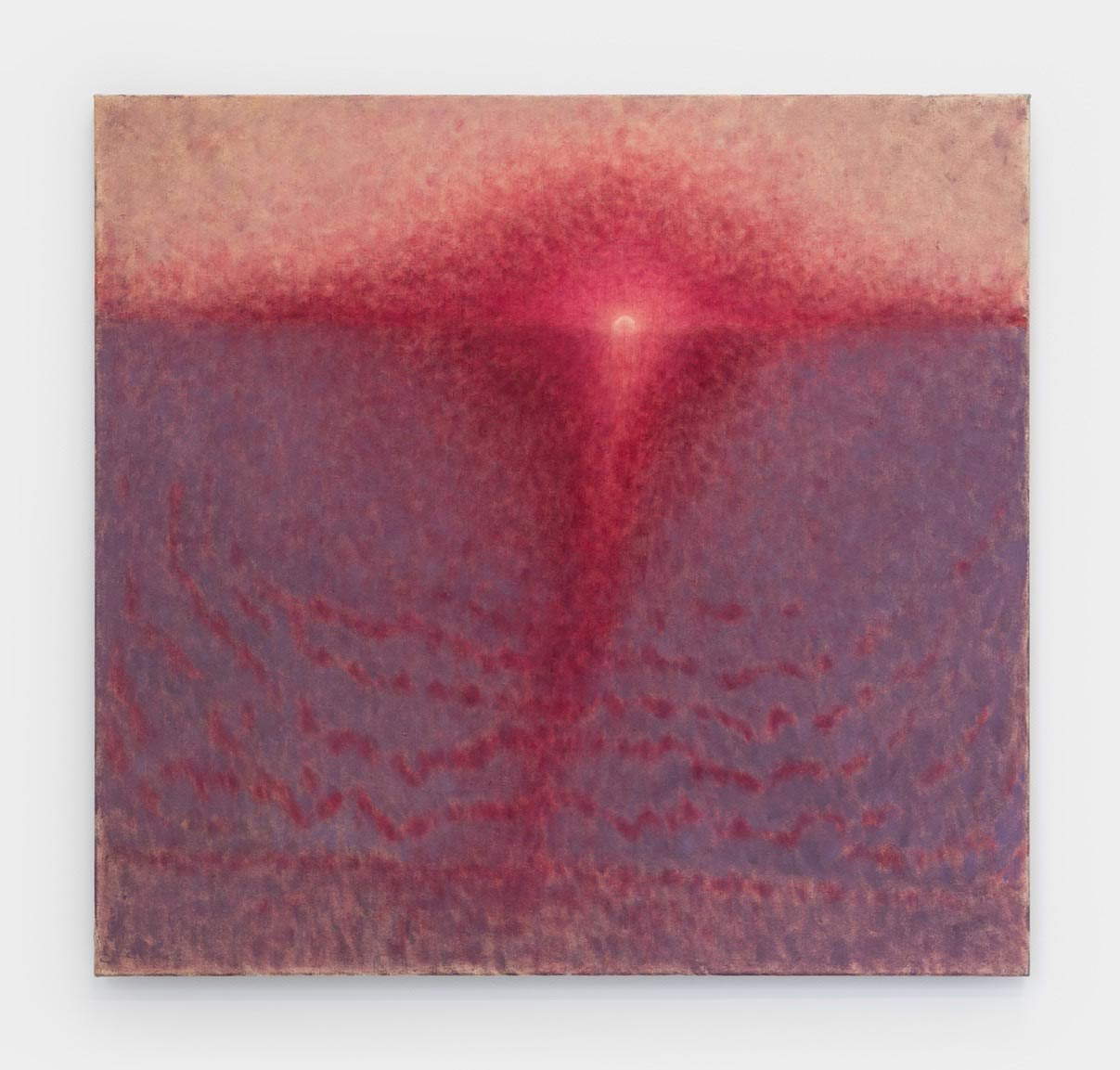
Warning: the translation into English of the original Italian article was created using automatic tools. We undertake to review all articles, but we do not guarantee the total absence of inaccuracies in the translation due to the program. You can find the original by clicking on the ITA button. If you find any mistake,please contact us.